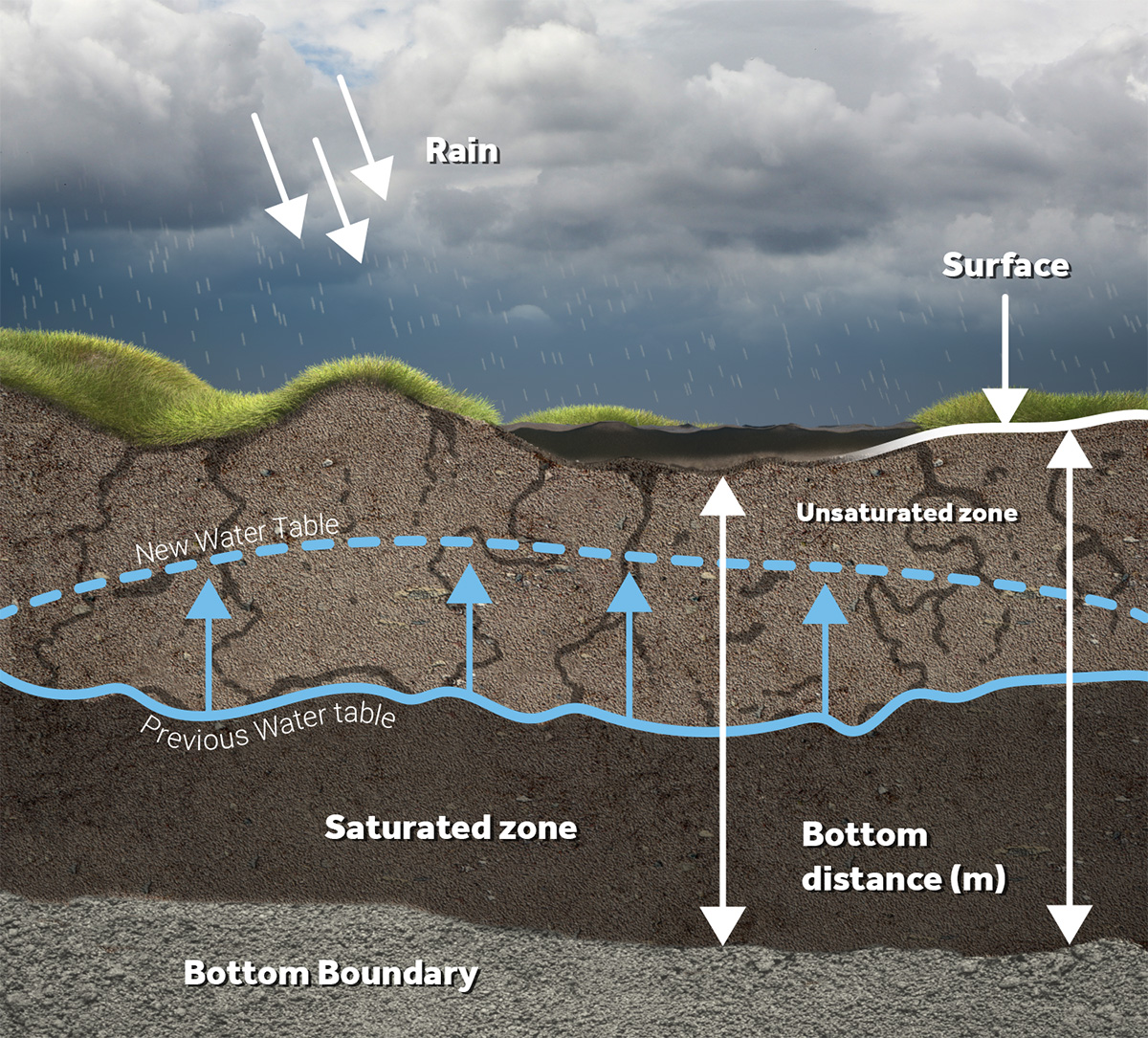Infiltration model (Water Overlay): Difference between revisions
No edit summary |
No edit summary |
||
| Line 26: | Line 26: | ||
* [[Surface model (Water Overlay)|Surface model]] | * [[Surface model (Water Overlay)|Surface model]] | ||
* [[underground model (Water Overlay)|Underground model]] | * [[underground model (Water Overlay)|Underground model]] | ||
* [[ | * [[Tracer flow model (Water Overlay)|Tracer flow model]] | ||
{{Template:WaterOverlay formula nav}} | {{Template:WaterOverlay formula nav}} | ||
Revision as of 11:12, 4 December 2020
The Water Module supports two types of infiltration: infiltration from the surface to the unsaturated zone and infiltration from the unsaturated zone to the saturated zone. Additionally, exfiltration can also occur due to horizontal groundwater flow.
Infiltration
Surface infiltration
Surface water can infiltrate into the underground unsaturated layer. When it does, it infiltrates at a speed defined by the surface terrain's GROUND_INFILTRATION_MD attribute, the underground terrain's GROUND_INFILTRATION_MD attribute, or (if present) by the construction's GROUND_INFILTRATION_MD, whichever value is lowest. Thus, the least conductive layer will be the bottleneck, even if the other layers allow better infiltration.
Water infiltrating into the unsaturated layer is assumed to be spread equally across the entire unsaturated column within the grid cell.
Surface infiltration is active when the Ground water mode is set to Complete or Infiltration Only.
Underground infiltration
Water can flow further down into the saturated zone at a speed defined by the underground terrain's GROUND_INFILTRATION_MD attribute. Based on the given timestep and infiltration speed, the distance the water can travel downwards is determined. This distance can be projected on this unsaturated zone as a subsection. The amount of water that flows from the unsaturated zone to the saturated zone is then equal to the amount of water in this subsection. After water has been added to the saturated zone, the groundwater level (and thus the height of the saturated zone) is redetermined. The water remaining in the unsaturated zone is redistributed uniformly across the (remaining) unsaturated zone.
Exfiltration
Water stored in the underground saturated zone can also exfiltrate out of the underground and back onto the surface, if the groundwater table exceeds the surface elevation. This situation can occur due to horizontal underground flow. Underground water flow into an adjacent cell is calculated, based on properties of the underground. Then, the groundwater table is adjusted accordingly, but may prove to exceed the height of the surface. The excess is placed on the surface of that cell instead.
Related formulas
- Groundwater level formula
- Underground flow formula
- Surface infiltration formula
- Underground infiltration formula





